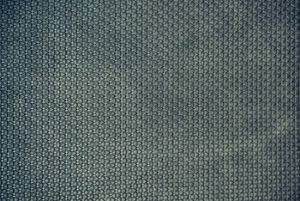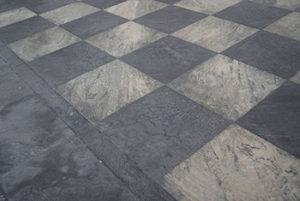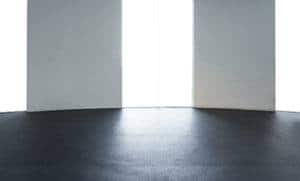How To Clean Rubber Surface
Rubber flooring is a popular choice for dance studios, gyms, and even nurseries. But how do you maintain this type of flooring without damaging its surface? Follow my helpful tips in today's article on how to clean rubber flooring.
When you have light-colored rubber floors, you'll see marks immediately as they occur. This can get frustrating because you want your floors to stay clean, especially in a professional environment. But keeping them clean doesn't have to be a chore; all you need are the right detergents and tools for the job.
It's important to know what tools and cleaning aids are suitable for rubber flooring so your flooring isn't damaged in the cleaning process. In this quick guide, I'll give you some tips on how to maintain your rubber floors without destroying them. If you take care of your rubber flooring properly, it can last for a long time. Keep reading to find out more.
- What Is Rubber Flooring?
- Advantages Of Rubber Flooring
- 3 Types Of Rubber Flooring
- Tools You'll Need For The Task
- Follow These Easy Cleaning Steps
- Top Rubber Floor Cleaning Brand
- FAQs
- Final Thoughts
What Is Rubber Flooring?
You'll be happy to know that rubber flooring is the most durable and easy type of flooring to maintain. The material is made either from recycled tires or from natural tree rubber.

The flooring is resistant to high impact and provides a level of traction for easy walking. Therefore it's an excellent flooring type for high-footfall areas such as stairs, inside airports, or shopping malls. Rubber flooring can also be placed near doorways to prevent people from slipping as they enter a building.
Rubber flooring comes in various thicknesses, sizes, and colors for residential and commercial use.
Back To Top
Advantages Of Rubber Flooring
Rubber flooring is typically used in sterile environments such as kitchens in restaurants or gyms. This is because rubber is resistant to mold growth and mildew so that it won't cause a health risk.
Additionally, rubber floors don't absorb water or debris, so they are generally suitable for areas where there's a lot of moisture, such as around indoor swimming pools. This type of flooring is perfect for indoor and outdoor areas alike. If you take care of your rubber flooring properly, it can last for up to 20 years.
Back To Top
3 Types Of Rubber Flooring
- Tiled Rubber Flooring
- Rubber Sheets
- Rubber Mats
Tiled Rubber Flooring
If you want a specific floor design, you may want to use tiled rubber because they come in different colors. Tiles are square-shaped and come in various dimensions and colors. Some rubber tiles will have interlocking sides so that they fit together like puzzle pieces.

You must place these tiles close together to be sure there are no gaps in between. This will ensure that no water or debris will get in between the tiles when you clean them. Some people avoid using tiles because water tends to seep in between the squares, so be aware of a potential issue.
Rubber Sheets
Rubber sheets come on a roll and can be installed with a process similar to that of wall-to-wall carpeting. Many homeowners prefer rubber sheets because you can cut them to specific shapes and sizes to fit in corners or around obstacles.
This rubber flooring comes in various patterns and textured surfaces, such as diamond plates for a non-slip finish. Sheet rubber flooring is quite versatile and can be used in residential garages or commercial mechanic workshops.
Rubber Mats
Rubber mats are installed in hallways or near doorways to provide safe footing when walking. Tiles and natural stone flooring tend to be slippery, especially when you tread water on them. Rubber mats will provide traction even when they become wet.
These mats aren't permanent installations, so that you can move them from one location to another. They're easy to move because they're lightweight and they're flexible; you can simply roll them up before moving them.
Back To Top
Tools You'll Need For The Task
Another advantage of rubber flooring is that you don't need special tools to clean them. All you need is a powerful vacuum cleaner, a mop, a bucket, sponge, and some mild detergent. Make sure you don't use any chemically-based detergents because these can cause the rubber to deteriorate.
Avoid using acidic detergents such as bleach, and don't use dishwashing liquid or liquids with turpentine because the solutions can stain the rubber. You can use a rubber floor conditioner or fabric softener for the cleaning process.
Back To Top
Follow These Easy Cleaning Steps
- Get Rid Of Dust And Debris
- Make A Cleaning Solution
- Mop Your Floors Clean
- Scrub Stubborn Marks
- Buff Your Rubber Flooring
Get Rid Of Dust And Debris
Sweeping floors takes time, and with some rubber products, dirt can stick to the surface, so sweeping will be a futile effort. To get rid of dirt and dust from these floors, you may use a powerful vacuum cleaner. With this appliance, you're able to suck up debris, even in hard-to-reach corners.
Vacuuming is quicker than sweeping, and if you use a wet/dry vacuum cleaner, you can probably skip the mopping step. It's best to vacuum your rubber floors every third day to prevent stones and other hard materials from tearing into the flooring material.
Make A Cleaning Solution
After cleaning up all the dust on your floors, it's time to wash away stubborn dirt and grime. Make a cleaning solution in a bucket by filling the bucket half-way with lukewarm water. Then add your mild cleaning detergent.

You don't want a cleaning detergent that produces lots of suds. You can add one cup of white vinegar into a gallon of water for a natural cleaning solution. Vinegar is a great natural cleaning aid that kills bacteria and can even prevent mold growth. What's best is, it won't leave a residue behind like soap products often do.
Mop Your Floors Clean
Now it's time to mop your rubber flooring. You don't have to use a microfiber mop for the job, but if you're worried about scratching the surface of your floors, you can certainly use a soft mop. Use a rectangular mop with a flexible handle so you can clean under furniture and in corners.
You don't have to drench rubber floors when mopping them, but you also don't have to use damp mops for cleaning. Rubber is water-resistant, so you can use as much water as you like to clean them. However, you don't want the water to seep under the rubber flooring because such seepage can cause your flooring to lift. So when it comes to water, less is always better.
Scrub Stubborn Marks
If there are stubborn marks on the floor that your mop simply won't clean off, you can use a soft sponge to scrub these areas. Use mild soap to spot-clean your rubber floors. You may also want to use a sponge to get into stubborn corners. If you're using a soapy detergent, make sure to rinse your floors thoroughly after cleaning.
Buff Your Rubber Flooring
To buff your rubber floors, use a high-quality rubber floor conditioner. You can buff the rubber with a cloth or use a machine to do the job. Ensure that the machine operates at less than 350 revolutions per minute to prevent damaging your floors.
To keep your rubber floors in top shape, you can buff them with a conditioner once every two to three weeks. If you don't have a rubber floor conditioner, you can pour one cup of fabric softener into a gallon of water as an alternative cleaning agent.
Back To Top
Top Rubber Floor Cleaning Brand
Aunt Fannie's floor cleaner is a popular cleaning aid because it has a natural pH balance. It's a non-toxic vinegar wash that's safe to use around animals and children. This cleaning detergent brand makes versatile products suitable for sensitive floorings such as vinyl, laminate, and natural stone tiles.
The cleaning aid comes in a sweet mandarin fragrance that doesn't have any chemical undertones. It will rid your home of foul odors and wipe away grease, stubborn dirt, and stains from your rubber flooring.
Aunt Fannie's floor cleaners are easy to use, so you don't need any special instructions when using them on your floors. Simply dilute half a cup into a gallon of water. Use the cleaning solution to safely clean your rubber flooring without destroying the finish. Since it's not a chemical-based product, it won't break down the material of your flooring. You can use it in a spray bottle, too, for spot-cleaning floors.
Back To Top
FAQs
- Is Rubber Flooring Durable?
- What Is Rubber Flooring Used For?
- Do You Need Underlayment For Rubber Flooring?
- Can You Wet Rubber Flooring?
- Does Rubber Flooring Have A Bad Smell?
- Is Rubber Flooring Toxic?
Is Rubber Flooring Durable?
Yes, rubber flooring is incredibly durable. That's why this type of flooring is used in areas that experience high foot traffic. The reason rubber floors are so resilient is because of the natural elasticity in the material.
What Is Rubber Flooring Used For?
Rubber floors are used to absorb impacts. That's why they're installed in gyms and even used on movie sets for stuntmen. Parents also use rubber flooring in their children's bedrooms in case of falls. Additionally, rubber floors can be used in hospitals, cafeterias, and hallways.
Even though rubber flooring is widely used in commercial settings, it has become quite popular in residential areas. Some homeowners use rubber tiles in their basements or garages to protect their subflooring from damage.
Do You Need Underlayment For Rubber Flooring?
Some subfloors, such as tiles, don't require an underlayment before installing rubber floors. On the other hand, if you have natural hardwood floors, it's recommended that you use a thin layer of paper underlayment to protect your subfloor from scuffing.
Can You Wet Rubber Flooring?
Yes, rubber flooring can safely get wet because it's water-resistant. The water shouldn't cause the rubber any damage. But you should avoid soaking this type of floor because the liquid can seep underneath the material and cause further issues.
When liquid interacts with the adhesive under your rubber flooring, it can cause the glue to lose its adhesiveness. As a result, your rubber floors may pull away from the subfloor and cause bubbling. So it's best not to drench your rubber floors if you can help it.
Does Rubber Flooring Have A Bad Smell?
Some rubber products do give off a foul odor, especially if they're made from recycled materials. They may give off a chemical smell for a while before adjusting to their new environment. The rubber will release VOC, but the smell will dissipate after a few days of exposure to air.
That's why it's important to keep windows open after you've installed your rubber flooring. Try to stay out of the room for a few days, so you don't get sick from the smell.
Is Rubber Flooring Toxic?
No, rubber flooring is a non-toxic product that's safe to use in any environment. Although the flooring can release VOC when the product is new, levels are too low to be a health risk. You should only buy rubber flooring from reputable brands because some low-grade products may have chemicals laced in the material.
If you're concerned about the smell of the rubber, simply keep the room well ventilated for a few days. Then wash your floors with a mild detergent. The scent will slowly disappear, but it will take some time.
Back To Top
Final Thoughts
Before you start cleaning your rubber floors, make sure you have the correct cleaning detergent and tools. Rubber floors aren't as sensitive as laminate or vinyl, so they don't scratch easily. Therefore, you can either use a broom or a vacuum cleaner to maintain your flooring.
Perform general cleaning tasks such as sweeping every other day. Deep cleaning such as mopping can be done every third day or when your floors are looking extremely dirty. Spot cleaning is simply a method to clean up spills to prevent the flooring from staining.
When spot cleaning, use a spray bottle and a soft cloth or sponge to clean the affected area so that you don't have to mop the entire floor.
Do you have rubber flooring in your home? How do you clean rubber floors? If you have any comments or first-hand experiences with rubber flooring, please post them below or share your pictures via our social media.
Back to Top
How To Clean Rubber Surface
Source: https://floorcritics.com/how-to-clean-rubber-flooring/
Posted by: robinsonwhamess.blogspot.com

0 Response to "How To Clean Rubber Surface"
Post a Comment